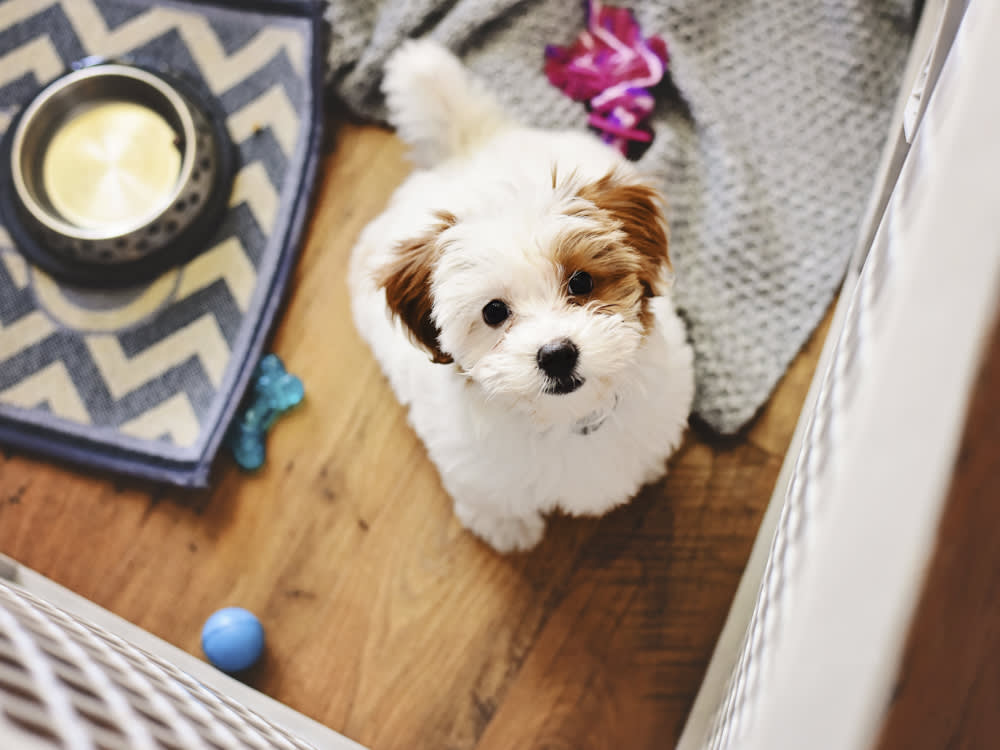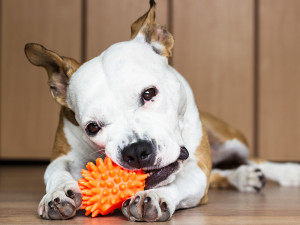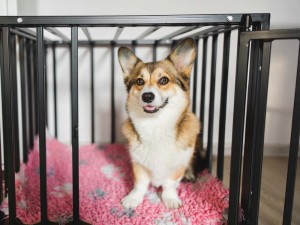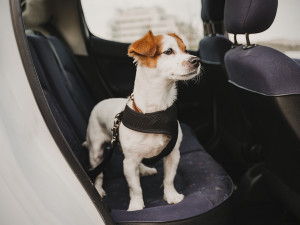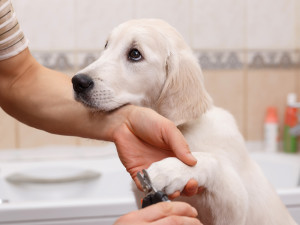When it Comes to Dog Crates, Think Outside The Literal Box
Dog behaviourist Tiffany Lovell on how to treat and prevent confinement anxiety
Many dog professionals believe that crates are a necessity when sharing your life with a dog – and they usually have a point. Crates can be a great management tool: they are helpful with a new puppy’s house-training routine, they can be a wonderful place for your dog to safely retreat and relax when there are too many visitors in the home, they can be used to safely transport dogs in a vehicle and they can be a comfy place for your dog to take an afternoon nap.
Having said all that, you may be surprised to hear that crates aren’t always the solution. Many dogs deal with separation anxiety and crates can sometimes make these problems worse.
What causes confinement anxiety in dogs?
When dogs suffer from confinement anxiety, their brains process things a bit differently and confining them to a small space can often heighten their anxiety and stress levels. Think of it like being trapped in a lift full of people or in a traffic jam in an underground tunnel. Even those of us without anxiety issues may become a bit nervous or uncomfortable. Now add in an anxiety disorder and you have a full-blown panic attack.
There could be several reasons a dog panics in a crate and it’s not always because of separation anxiety. If you have adopted a dog from a rescue centre, they probably spent many hours confined to a small wire kennel. It’s very possible that they have a negative association with this type of enclosure and won’t find an even smaller crate a comfortable place. This can sometimes be easily overcome by using positive reinforcement training and fun games to help your new dog build a positive association with their crate. Crate Gamesopens in new tab by Susan Garrett is one example.
When working with dogs who suffer from anxiety when left home alone, confining them to a crate or other small area is often recommended by well-meaning professionals. They might suggest using an exercise pen (also known as an X-pen), a baby gate or closing the dog in one small room. The reasoning behind these suggestions is usually to prevent accidents on the rug and/or destruction to the home while the dog's parents are gone.
The irony is that many dogs with separation anxiety manage to cause even greater destruction or self-injury while in their confinement area or crate. This can take the shape of torn-up bedding, bent crate wires or self-injury. Not to mention, their anxiety typically worsens when there is a combination of ‘home alone’ and ‘confined to a small area’.
How can I help my dog with confinement anxiety?
I have found that many of my clients’ dogs with separation anxiety also suffer from confinement anxiety. Considering that, they actually begin to relax and show more progress when allowed to be free in all – or a large portion – of the home. Once we eliminate the confinement, they no longer have that feeling of being trapped or as if the walls are closing in on them.
This allows us to introduce our behaviour modification program with one less hurdle in front of us. My clients are very relieved once they see their dogs begin to relax and lie down on their comfy dog bed.
How long does it take for a dog to overcome confinement anxiety?
It is very tricky to give an exact amount of time that it would take a dog to get over confinement anxiety. This is something specific and different for each dog and will be determined by how severe the anxiety is. When dealing with confinement anxiety this is something that needs to be taken at the pace of the dog, this is not something that can be rushed because you need to ‘crate your dog’. This type of training takes time and a lot of patience. Depending on how severe your dog’s confinement anxiety is, it may be best to get a training plan from a trainer who is knowledgeable in this area.
Can separation anxiety be linked to confinement anxiety?
Many dogs with separation anxiety have crate or confinement anxiety, but not every dog with confinement anxiety has separation anxiety. Separation anxiety in a dog is typically when a dog becomes extremely dependent on having certain family members around.
When these dogs are left alone, they show very undesirable behaviors, such as excessive barking, howling or whining, chewing and destructive behaviours, having accidents, heavy panting or drooling. If you think your dog has separation anxiety, it is best to check with your vet to begin to formulate a plan on how to help and possibly treat your dog.
How to select a crate for a dog with confinement anxiety
There are specific crates that are more beneficial to purchase when your dog has confinement anxiety. They may be likely to chew and break through a crate that is not strong enough. Dogs with confinement anxiety have been known to get injured because of the type of crate they were placed in. Broken teeth – or worse – a jaw stuck in the wires of a metal crate and cracked nails are some of the issues that arise.
It is best to stay away from mesh fabric crates when you have a dog with confinement issues because they would easily be able to escape. Picking a crate for your dog with confinement issues will depend on the severity of their behaviour. At times, a wire metal crate may be okay, but a dog can get teeth, claws, jaw or legs caught in this type of crate if the behaviours they exhibit are more than just drooling and barking. Ask a vet or talk with a trainer to decide which crate is best for you and your dog.
What are the alternatives for dog crates?
A good alternative to using a crate for a dog with confinement issues would be a safe dog daycare or dog babysitter – someone to stay with your dog while you are away to help alleviate the issues. Another alternative would be to leave your dog in a safe room in your home. This option can be a gamble though depending on your dog and the severity of their behaviors. They could try to break out of the room by chewing your window frames or scratching up your door.
What is a high-anxiety dog crate?
A high-anxiety dog crate is one that is escape-proof and typically safe to leave your struggling dog in. High-anxiety dog crates allow you to contain your dog knowing they will most likely not get hurt while you are gone. These crates typically have extra security to keep your dog contained so they do not learn the behaviour of escaping a crate.
This type of crate will have features to keep your dog safe – one main feature should give you the ability to know there is nowhere on the crate your dog’s teeth, jaw, nails or legs can get caught. A true high-anxiety dog crate will cost you a pretty penny but is worth all the peace of mind knowing your dog is safe while you are away.
Do high-anxiety dog crates work?
Yes, a true high-anxiety dog crate works to keep your dog safe while they are learning to work through their confinement issues. These crates do not get rid of your dog’s behaviours – that is something you will still need to work on – but they do keep your dog safe. Because a high-anxiety dog crate is escape-proof, it may help teach your dog that escaping is impossible.
Please, don’t get me wrong: I still believe a crate can be a wonderful thing for a dog. In fact, some dogs I work with will seek out their crate and willingly go in it several times a day. I just think it’s important for all of us, including trainers and veterinarians, to consider that this is not a one-size-fits-all solution.
We must be willing to consider what’s best for each individual dog and honour those needs. This should include performing a proper and safe assessment to determine if a dog is comfortable in a crate, especially when left home alone. Some dogs need us to think outside the box before placing them in one.
